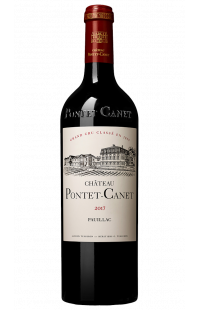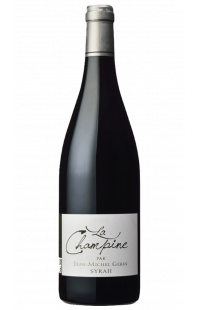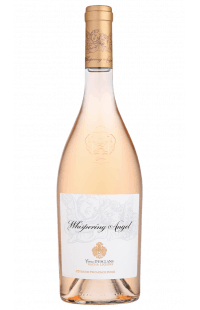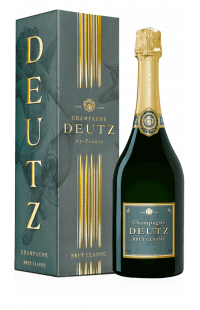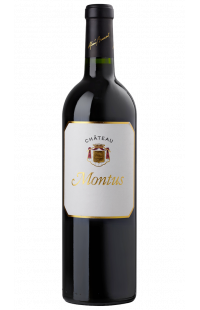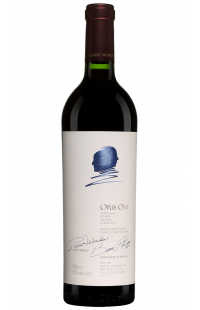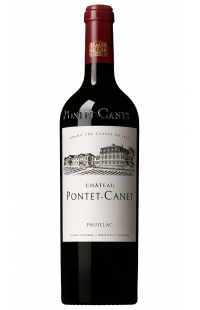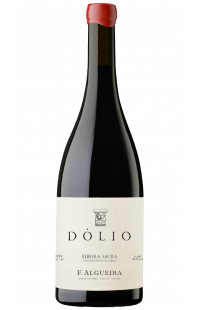- Menu
- All our wines
- Bordeaux
-
Rhône
-
Burgundy
-
Rosés Wines
-
Champagne
- France
-
World
- PRIMEURS
- ORGANIC WINES
Castilla y Léon
There are 2 products.

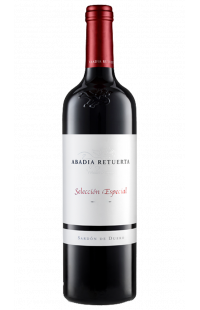
Available in
- Bottle (75cl)
- 45.00€ / bottle- Case of 12 bottles (75cl)
41.25€ / bottleTASTING NOTES
Wine Advocate
92+
Wine Spectator
93
Specifications
Benefit of the 12th bottle offered by choosing the format : Case of 12 bottles.
Degressive price applied automatically.
The Wines of Castilla y León: Discover the Richness of Spanish Wines
Explore the diversity of Castilla y León wines, an iconic Spanish wine region renowned for its superior red and white wines. Learn all about the grape varieties, appellations, and the best wineries to visit.
The wines of Castilla y León are often overshadowed by those from more famous regions like Rioja or Ribera del Duero. However, this vast region, located in the heart of Spain, boasts an impressive viticultural richness, with a variety of grape varieties, picturesque landscapes, and a rich winemaking history. In this article, we will delve deep into the different appellations of Castilla y León, the emblematic grape varieties, and why these wines deserve a place of honor in your cellar.
Introduction to Castilla y León Wines
Castilla y León wines are true hidden gems of Spanish viticulture. Located in the northwest of Spain, this region offers a diversity of climates and soils that allow for the production of varied and high-quality wines. The continental climate with cold winters and hot summers favors slow and balanced grape ripening, while the varied altitudes of the vineyards add complexity to the wines produced. Whether you are a lover of full-bodied red wines or fresh and fruity whites, Castilla y León has something to offer for every palate.
Viticultural History of Castilla y León
Origins of Viticulture in the Region
Viticulture in Castilla y León dates back to Roman times, over two thousand years ago. The Romans introduced vine cultivation to the region, and over time, this winemaking tradition took root, enduring through centuries despite historical vicissitudes. During the Middle Ages, Christian monasteries played a key role in preserving and developing viticultural techniques, producing wine for religious and commercial purposes.
Impact of Monasteries and Religious Orders
Monasteries, particularly those along the pilgrimage routes to Santiago de Compostela, were centers of viticultural innovation. Monks, who mastered the art of winemaking, selected the best grape varieties and refined cultivation and production methods. This religious influence maintained a certain quality and continuity in the region's wine production, even during turbulent periods.
Modern Rise of Castilla y León Wines
The modern revival of Castilla y León wines began in the 20th century with the recognition of the quality of wines from Ribera del Duero and Rueda, which obtained Denomination of Origin (DO) status. Since then, the region has continued to evolve, attracting the attention of wine enthusiasts worldwide thanks to its authentic and expressive wines. Today, Castilla y León is a dynamic wine region where tradition and innovation meet to produce wines that captivate the most demanding palates.
Denominations of Origin (DO) in Castilla y León
Castilla y León is home to several Denominations of Origin (DO), each with its own distinctive characteristics. Let's explore the main DOs of the region.
DO Ribera del Duero
Located along the Duero River, this appellation is one of Spain's most prestigious. Ribera del Duero wines are primarily powerful and well-structured reds made from the Tempranillo grape, locally called "Tinto Fino." The extreme climatic conditions, with marked temperature variations between day and night, yield wines of great concentration and unique aromatic complexity.
DO Rueda
Rueda is renowned for its fresh and aromatic white wines, mainly based on the Verdejo grape variety. This region has become a benchmark for Spanish white wines thanks to its continental climate and gravelly soils, which give the wines beautiful acidity and intense aromas of tropical fruits, citrus, and herbs.
DO Toro
The DO Toro is known for its robust red wines, also primarily made from the Tempranillo grape, locally called "Tinta de Toro." These wines are often more intense and concentrated than those from Ribera del Duero, with powerful tannins and remarkable aging potential. Toro has a long winemaking tradition, with ancient vineyards producing wines of great depth.
DO Bierzo
Bierzo is a unique appellation located at the northwest end of Castilla y León, producing elegant and complex wines from the Mencía grape. Bierzo wines stand out for their finesse, aromas of red and black fruits, and a minerality that reflects the region's schist and granite soils. The more temperate climate of Bierzo, with Atlantic influence, allows for balanced and refreshing wines.
DO Cigales
Cigales, although less known, is renowned for its fruity and refreshing rosés (rosados), as well as structured reds. The region's dry climate and limestone soils give Cigales wines freshness and aromatic intensity, making them ideal companions for summer dishes.
DO Tierra de León
Tierra de León, located in the north of the region, primarily produces red and rosé wines from the indigenous Prieto Picudo grape. Tierra de León wines are characterized by their lively acidity, red fruit aromas, and ability to age well. This emerging appellation is beginning to attract connoisseurs' attention for its unique character.
DO Arribes
DO Arribes is a small appellation located along the border with Portugal, characterized by terraced vineyards along the Duero River. Arribes wines are often reds and whites made from native grape varieties like Juan García and Rufete. These little-known but fascinating wines offer a distinctive flavor palette with Portuguese and Spanish influences.
Emblematic Grape Varieties of Castilla y León
Castilla y León wines derive their diversity from the many grape varieties cultivated in the region. Here are the most emblematic varieties.
Tempranillo: King of Reds
Tempranillo is undoubtedly the most important grape variety in Castilla y León, especially in the regions of Ribera del Duero, Toro, and Cigales. Known for its ability to produce structured wines with aromas of red fruits, tobacco, and vanilla, Tempranillo is the backbone of the region's red wines. Castilla y León's Tempranillo stands out for its depth and aging capacity.
Verdejo: Star of Whites
Verdejo is the flagship grape of Rueda's white wines. This variety produces fresh wines with good acidity and characteristic aromas of citrus, tropical fruits, and herbs. Verdejo is often vinified alone or blended with Sauvignon Blanc, creating wines ideal for pairing with light dishes or enjoying as an aperitif.
Mencía: A Unique Grape from Bierzo
Mencía is the emblematic grape of DO Bierzo, where it produces elegant and mineral red wines. Mencía wines are known for their freshness, delicate fruitiness, and floral aromas. This grape, cultivated mainly in northwestern Spain, is gaining popularity outside its region of origin thanks to its distinctive profile and ability to reflect the terroir.
Characteristics of Castilla y León Red Wines
Wines of Ribera del Duero
Red wines from Ribera del Duero are among the most acclaimed in Spain. Made primarily from Tempranillo, these wines are full-bodied with a solid tannic structure and a rich aromatic palette that includes notes of dark fruits, leather, tobacco, and spices. The best Ribera del Duero vintages age in oak barrels, imparting vanilla and cocoa aromas, and can be stored for decades.
Wines of Toro
Toro wines are known for their power and robustness. Often more intense than those from Ribera del Duero, Toro reds offer concentrated aromas of dark fruits, prunes, and chocolate, with firm tannins and a long finish. These wines are often produced from very old vines, contributing to their complexity and depth.
Wines of Cigales
Red wines from Cigales, although less famous than those from Ribera del Duero or Toro, deserve attention for their elegance and freshness. Cigales reds are often lighter, with aromas of fresh red fruits, balanced acidity, and a mineral touch that makes them very pleasant to drink young.
Characteristics of Castilla y León White Wines
Wines of Rueda
Rueda's white wines, mainly made from the Verdejo grape, are recognized for their freshness and aromatic intensity. These wines offer lively aromas of lemon, grapefruit, green apple, and sometimes herbaceous notes. On the palate, Rueda wines are generally crisp and well-balanced, with a refreshing finish. They are perfect for accompanying seafood, salads, or fish-based dishes.
Other Remarkable White Wines
Besides Rueda wines, Castilla y León also produces excellent white wines in other appellations like Bierzo and Tierra de León. These wines, often made from local grape varieties like Godello or Albillo, offer an interesting alternative for white wine lovers, with aromatic profiles ranging from stone fruits to mineral and floral notes.
Wineries to Visit in Castilla y León
Historic and Modern Wineries
Castilla y León is dotted with wineries, or "bodegas," reflecting both the region's history and modernity. Historic bodegas, often located in monasteries or medieval castles, offer a dive into the region's winemaking past. In contrast, modern wineries, designed by renowned architects, combine cutting-edge technology and avant-garde design to produce wines of exceptional quality.
Wine Tourism Experiences in the Region
Wine tourism is booming in Castilla y León, with many bodegas offering tastings, guided vineyard tours, and winemaking workshops. Some wineries even offer accommodations and gourmet restaurants, allowing visitors to fully immerse themselves in the world of wine. The diversity of wine tourism experiences in the region, ranging from tasting wines in underground cellars to participating in the harvest, makes Castilla y León a must-visit destination for wine enthusiasts.
Food Pairings with Castilla y León Wines
Which Dishes to Pair with Red Wines?
Castilla y León's red wines, with their structure and complexity, pair perfectly with rich and flavorful dishes. Grilled meats, beef stews, and game-based dishes are ideal choices to accompany a Ribera del Duero or a Toro. Aged cheeses like Manchego also pair very well with these wines. For lighter reds from Cigales, dishes like roasted chicken or mushroom pasta will be perfect.
Best Dishes to Accompany White Wines
Castilla y León's white wines, particularly those from Rueda, are ideal companions for lighter dishes. Seafood, grilled fish, and summer salads harmonize perfectly with the freshness and acidity of Verdejo wines. For more structured whites like some Godello from Bierzo, dishes like risottos or poultry in light sauce are excellent choices.
Where to Buy Castilla y León Wines?
Tips for Online Purchases
With the rise of online sales platforms, it's easier than ever to buy Castilla y León wines from anywhere in the world. Many specialized sites offer a selection of quality wines, with detailed descriptions and tasting notes to help you make your choice. Be sure to check the site's reputation and delivery conditions before placing an order.
Best Physical Stores in Spain and Abroad
If you prefer to buy your wines in person, many wineries and specialized stores in Spain offer a wide selection of Castilla y León wines. Abroad, some stores specializing in Spanish wines or large wine retail chains also have a good selection of wines from this region. Don't hesitate to ask the staff for recommendations to discover wines that match your tastes.
The Future of Castilla y León Wines
Innovations in Viticulture
Castilla y León is a constantly evolving region where winemakers experiment with new viticultural techniques to improve wine quality. Practices like organic farming, biodynamics, and the use of disease-resistant varieties are gaining popularity. These innovations, combined with respect for traditions, allow for the production of wines that are both modern and environmentally friendly.
Impact of Climate Change on Vineyards
Like many other wine regions worldwide, climate change poses challenges for Castilla y León winemakers. Rising temperatures and changes in precipitation patterns can affect grape ripening and wine quality. However, many winemakers are adapting by modifying cultivation practices, exploring new vineyard altitudes, or planting grape varieties more resistant to heat. Innovation and adaptation will be essential to preserve the quality of Castilla y León wines in the coming years.
FAQs about Castilla y León Wines
What is the main grape variety used in Ribera del Duero red wines? The main grape variety used in Ribera del Duero red wines is Tempranillo, locally called Tinto Fino.
What are the typical aromas of Rueda white wines? Rueda white wines, mainly made from the Verdejo grape, offer aromas of citrus, tropical fruits, and sometimes herbaceous notes.
Are Toro wines suitable for aging? Yes, Toro wines, which are often very concentrated and tannic, have excellent aging potential and can improve in the bottle for many years.
Can I visit wineries in Castilla y León? Yes, many wineries in Castilla y León offer guided tours, tastings, and other wine tourism activities for visitors.
What dishes pair well with Castilla y León red wines? Castilla y León red wines pair well with grilled meats, stews, game dishes, and aged cheeses.
Where can I buy Castilla y León wines online? You can buy Castilla y León wines on many sites specializing in Spanish wines, as well as on general online sales platforms.
Conclusion
Castilla y León wines are a true expression of Spanish viticultural diversity. From the powerful reds of Ribera del Duero to the refreshing whites of Rueda, each bottle tells a unique story of terroir, tradition, and passion. If you are a wine enthusiast seeking new discoveries, don't miss the opportunity to explore this fascinating region. Castilla y León, with its breathtaking landscapes and characterful wines, deserves a special place in the wine world.
